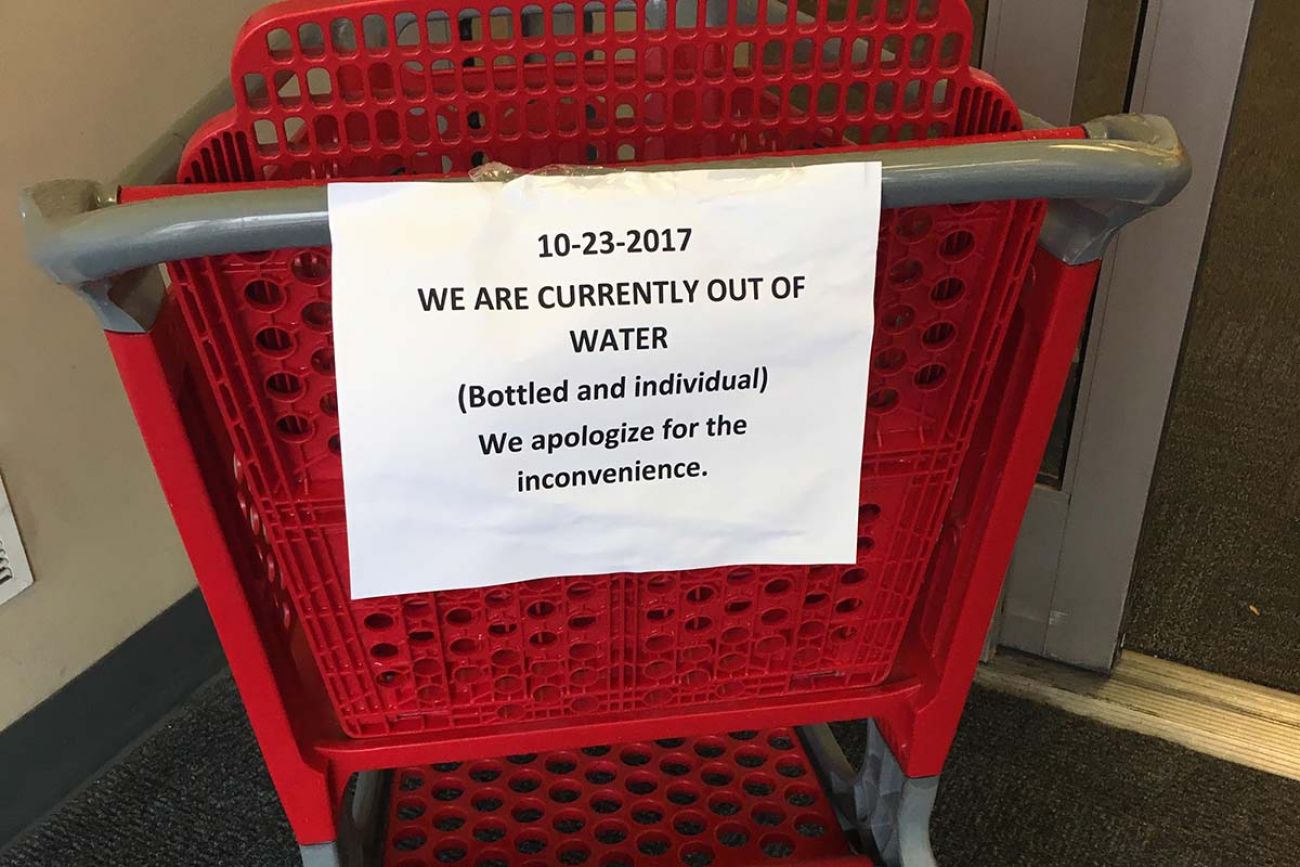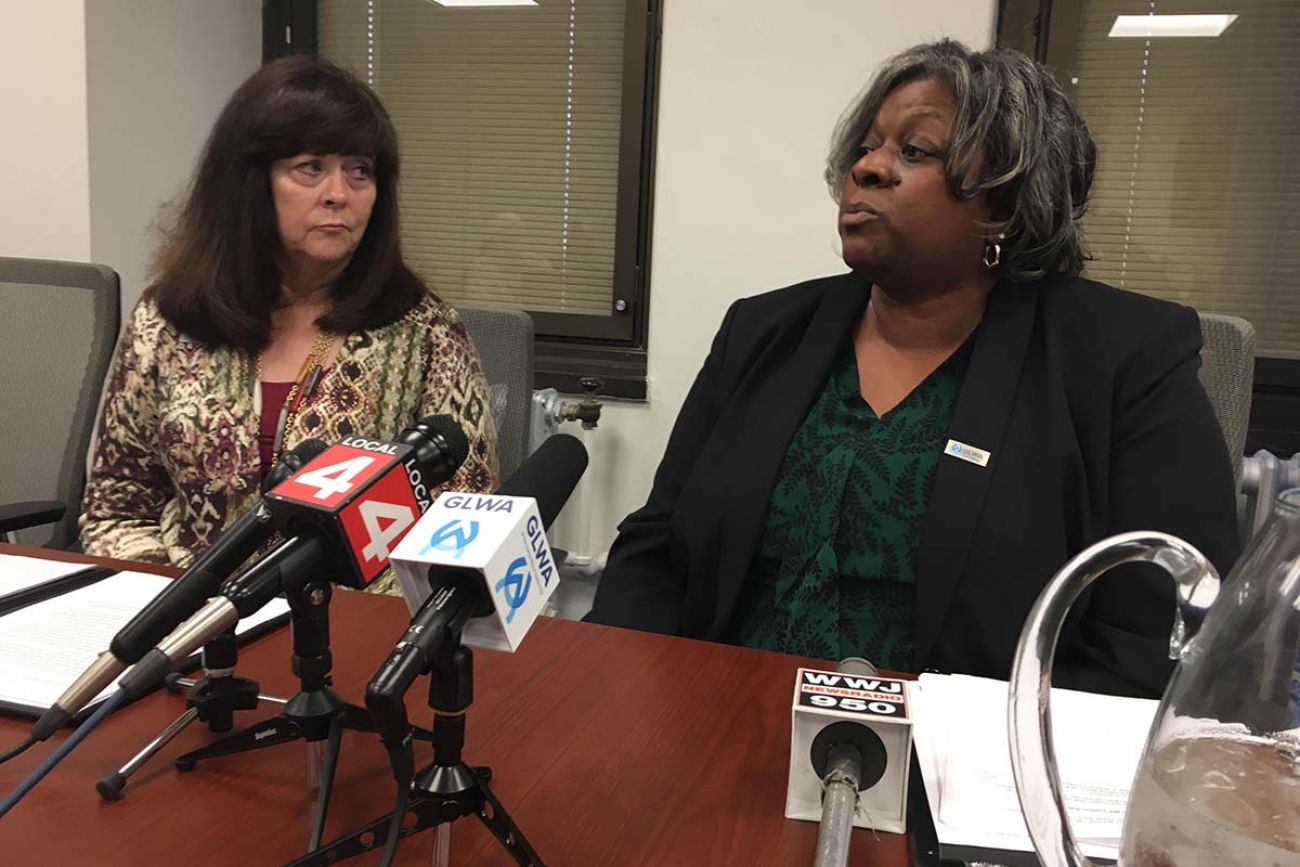Water crisis hits Michigan suburbs. ‘We’ve been sounding alarms for years’

When a massive water main broke this week in Oakland County and made tap water unsafe to drink for 305,000 residents, a top utility official called the mishap “unprecedented.”
Experts fear it could be something else: a byproduct of aging infrastructure in Michigan whose failings are becoming more frequent and dangerous. A task force appointed by Gov. Rick Snyder last year concluded that Michigan water systems need $60 billion in upgrades.
“There’s no question. As infrastructure gets older, we’re seeing these things happen more frequently, and the cost for repairs is only going to increase,” said Sean McBrearty, a campaign organizer with Michigan Clean Water Action, an environmental group.
MORE COVERAGE: Michigan’s record on infrastructure: Ignore everything
MORE COVERAGE: $4 billion question: How to pay for infrastructure fixes?
This month alone, boil water advisories have been issued in Potterville, South Haven, Albion and Mount Morris because of water main breaks, which are common in winter because of the freeze-thaw cycle but far less so in warmer months.
“We’ve taken water and sewer for granted for a long time,” said Brian Steglitz, who heads the City of Ann Arbor’s Water Treatment Department and served on the governor’s task force.
Officials said they don’t know why the water main ruptured in Farmington Hills on Monday night, pouring thousands of gallons onto the street and prompting a water emergency extending to northwestern Detroit exurbs.

The incident lowered water pressure, making tap water susceptible to bacteria and E.coli infections, prompting a mandate to boil water that covered 11 communities from Novi and West Bloomfield to Rochester Hills that is estimated to continue at least through Friday.
Schools closed. Hospitals canceled surgeries. And residents drove miles for bottled water.
“A main break of this magnitude impacting so many customers is really unprecedented in our system,” said Sue McCormick, chief executive officer for the Great Lakes Water Authority that manages the water system that serves some 4 million customers in southeast Michigan.
Water officials are investigating whether an outage at a nearby power station caused an electrical surge that contributed to the rupture of the 48-inch transmission main, said Cheryl Porter, chief operating officer of the authority.
The water main was installed in 1970 – about middle-aged for its type – and had no previous breaks, McCormick said. She acknowledged it had never been inspected but said that isn’t unusual for large mains that are buried 6-to-10 feet deep.
The mishap comes three weeks after the Detroit branch of the NAACP called on the Great Lakes Water Authority to invest more money in repairs and maintenance. Since 2016, the authority has been leasing and operating Detroit’s water system as part of a deal that gives the city $50 million per year over 40 years to make repairs.
“We’ve been sounding alarms for years that there’s a huge infrastructure crisis,” said Meeko Williams, a Detroit water activist who served on the Blue Ribbon Panel on Water Affordability, a group of experts appointed by the City Council in 2016.
In February, for instance, a problem at a GLWA water treatment plant in Detroit put nearly half the city – and all of Hamtramck and Highland Park – on a boil-water advisory for more than two days.
“So many things should have been wake-up calls,” Williams said. “Why neighborhoods and freeways flood when it storms. Sinkholes. Maybe now that it’s happening to Oakland County (Michigan’s wealthiest), people will pay attention.”
‘We really could use some help’
Water quality issues extend far beyond southeast Michigan.
In September, the Great Lakes Commission, a government group representing eight states and two provinces, called for $271 billion in water infrastructure investment over the next 20 years – including at least $15 billion in investments to the Michigan water system.
“The lack of long-term planning and investments to maintain and improve water infrastructure systems are key factors that have led to this crisis,” the report read. “Many Great Lakes communities have outdated water infrastructure that is now between 50 and 150 years old.”
The most notorious example, of course, is Flint, which is still recovering from a three-year water emergency that exposed 100,000 residents to high levels of lead in drinking water and is also linked to an outbreak of legionella that killed at least a dozen people. The crisis began when the city, at the direction of a state-appointed emergency manager, switched its water source from the Detroit system to the Flint River without taking precautions to ensure the city’s pipes didn’t leach lead into the system.
MORE COVERAGE: Disaster Day by Day: A detailed Flint crisis timeline
Statewide, Snyder’s task force found a host of challenges, including:
- 5.7 billion gallons, on average, of untreated raw sewage that flows into Michigan waterways annually.
- 64 rivers that drain the vast majority of land in the Lower Peninsula (84 percent) tested positive for human sewage.
- 1 in 10 of the state’s 1.3 million septic tanks are experiencing operational problems.
Yet the municipalities, counties and utility authorities that can fix the problems are spending $800 million a year less than is necessary to keep up, according to the report.
“We could really use some help,” said Jim Nash, Oakland County’s water resources commissioner.
Snyder’s task force called for $4 billion per year in new taxes and fees. Nothing has come of the proposal.
Nash said he would welcome the new spending because it would help communities inspect systems and prioritize repairs. Without a list of specific needs, Nash said cities only respond to emergencies. Detroit, for instance, repairs 1,900 water main breaks per year rather than invest in improvements, Nash said.
If Detroit shored up its massive leaks, Nash said, the GLWA could shut down one of its five water treatment plants. The system pumps 400 million gallons of water per day, but as much as 80 million gallons of that leaks from the pipes before reaching customers, according to a 2015 master plan.
MORE COVERAGE: Detroit cites progress, but water shutoffs actually rose last year
Compounding the problem in places like Metro Detroit: Conservation is reducing water usage, which reduces revenues. Yet the GLWA and the dozens of municipalities that operate systems big and small still have to maintain the same number of pipes.
“This system was built for a much larger service population than we have today,” said McCormick.
A ‘major pain and inconvenience’
In Oakland County, the incident was a wakeup call to Tanya Haaseth.
The West Bloomfield woman has three sons, including a 17-year-old with autism. She called the situation a “major pain and inconvenience.”
“I worry about these things all the time because we can’t just go to a hotel because of my son,” she said. “He doesn’t understand that he can’t drink the water, so we have to be vigilant to make sure he doesn’t.”
She said she plans on keeping more bottled water in storage in case of a recurrence.
McCormick said the GLWA has undertaken a “methodical condition assessment” of its sewer system and will embark on a similar one for its water transmission lines.
Steglitz and Nash agree the situation could have a silver lining: increased awareness of a problem that many had associated with poorer cities such as Flint and Detroit.
“It’s starting to impact more people,” Steglitz said.
Ann Arbor, for instance, may have to spend $80 million to replace a water treatment plant that was built in 1938 and updated many times over the years. And in 2015, Grand Rapids finished a multi-million upgrade of a system that carries and treats sanitary sewage and stormwater, reducing the danger that untreated sewage would flow into the Grand River.
“You have to replace the car at some point,” Steglitz said. “You can’t keep fixing it.”
See what new members are saying about why they donated to Bridge Michigan:
- “In order for this information to be accurate and unbiased it must be underwritten by its readers, not by special interests.” - Larry S.
- “Not many other media sources report on the topics Bridge does.” - Susan B.
- “Your journalism is outstanding and rare these days.” - Mark S.
If you want to ensure the future of nonpartisan, nonprofit Michigan journalism, please become a member today. You, too, will be asked why you donated and maybe we'll feature your quote next time!

